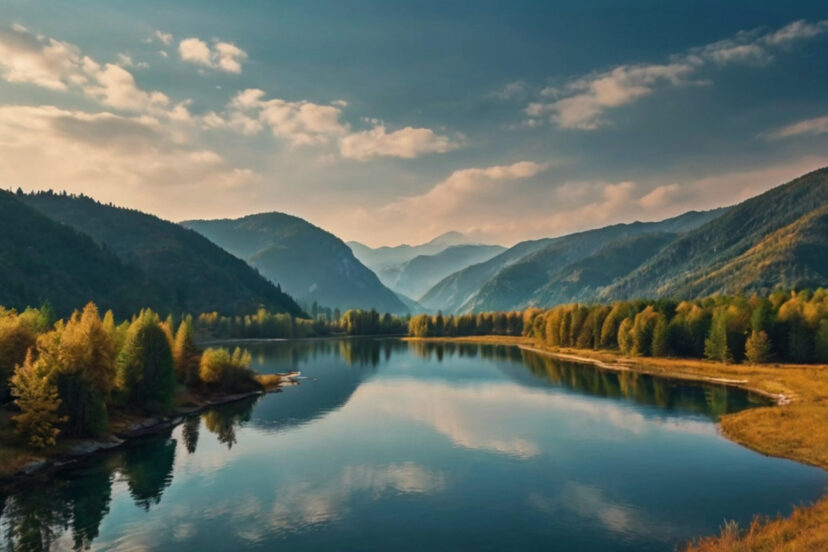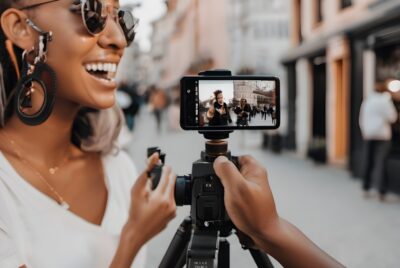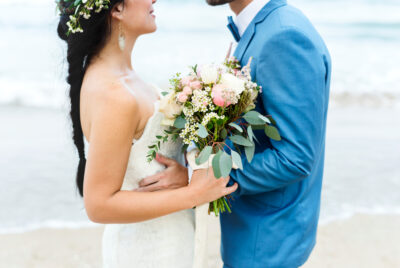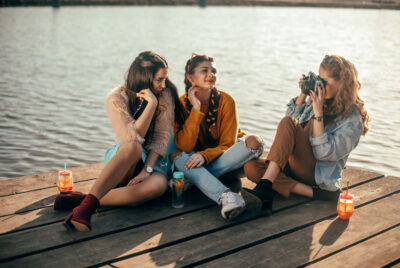Landscape for Photography
There’s something magical about being alone with your camera, a wide-open horizon, and the quiet hum of nature around you. Landscape photography isn’t just about capturing what’s out there—it’s about sharing how it felt to be there. If you’re curious about how to create breathtaking landscape images or want to improve your technique, I’m here to share everything I’ve learned out in the field (and in the mud, rain, and early morning chill!).
Introduction to Landscape Photography
Why It’s a Timeless Genre
Landscape photography has been a staple of visual storytelling since the days of film. Why? Because nature never goes out of style. The earth gives us endless variety—mountains, oceans, deserts, forests—and no two sunsets are ever the same.
The Emotional Impact of Natural Beauty
The right landscape photo can make you feel small, inspired, peaceful, or awestruck. It’s about more than just scenery—it’s about emotion. That’s what makes this genre so powerful.
>> Essential gear for landscape photography HERE <<
Essential Gear for Landscape Photography
Camera Choices
You don’t need the latest full-frame beast to shoot landscapes. A good DSLR or mirrorless camera with manual controls does the job beautifully. Just make sure it can shoot RAW so you have full editing flexibility.
Tripods and Filters
A sturdy tripod is non-negotiable for sharp shots, especially in low light. And don’t underestimate the power of filters—like a circular polarizer to cut glare or an ND filter to get those silky waterfalls.
Lenses for Wide and Telephoto Views
Wide-angle lenses help capture sweeping vistas, while telephoto lenses are amazing for compressing mountains or isolating details in a landscape. Both belong in your bag.
Understanding Light in Landscapes
The Golden Hour vs. Blue Hour
Golden hour (shortly after sunrise or before sunset) gives you soft, warm light that flatters everything. Blue hour (just before sunrise or after sunset) casts a dreamy, cool tone—perfect for moody landscapes.
Midday Challenges and Opportunities
Midday light can be harsh, but it’s not useless. Use shadows creatively, shoot in forests, or switch to black and white for strong contrast.
Composition Techniques That Make Landscapes Pop
Rule of Thirds and Leading Lines
Use the rule of thirds to balance your composition, and lead the viewer’s eye through your image using paths, rivers, or fences.
Framing and Layering for Depth
Add interest by framing your scene with trees or rocks. Layering mountains or hills in the background creates a sense of depth.
Including Foreground Interest
A rock, a flower, or even your hiking boots in the shot can anchor the image and make it more relatable.
Weather: A Landscape Photographer’s Wild Card
How to Use Storms, Fog, and Clouds Creatively
Bad weather = great photos. Dramatic clouds, rolling fog, or a break in a storm can add tension, mood, and energy to your shots.
Planning Around Weather Changes
Use apps like Windy, AccuWeather, or PhotoPills to plan ahead. But sometimes, spontaneity leads to the best photos—so don’t fear getting wet.
Best Locations for Landscape Photography
National Parks and Remote Places
Places like Yosemite, Banff, or Iceland are bucket list-worthy. But remember: the more remote the spot, the less photographed it’s likely to be.
Finding Hidden Gems in Your Backyard
Don’t ignore local nature reserves or parks. I’ve captured some of my favorite images just minutes from home. It’s all about how you see the scene.
>> Essential gear for landscape photography HERE <<
Post-Processing in Landscape Photography
Enhancing Without Overdoing It
A little editing can go a long way. Boost contrast, correct exposure, and enhance colors—but don’t push it to the point where it looks fake.
Tools: Lightroom, Photoshop, or Both?
Lightroom is great for general adjustments and organizing. Photoshop lets you dive deeper into advanced retouching. Use both if you can.
Ethical Practices in Landscape Photography
Leave No Trace
Respect nature. Don’t trample flowers, break branches, or leave trash behind just to “get the shot.”
Respect Wildlife and Local Communities
Use a long lens for animals, and always get permission if you’re shooting on private land. Photography should connect us to nature—not disrupt it.
Developing Patience and Persistence
Waiting for the Perfect Light
Landscape photography often means getting up at 4 a.m., waiting in freezing conditions, and coming back empty-handed. But when the light hits just right—it’s pure magic.
Revisiting Locations for Better Shots
Sometimes a location doesn’t work the first time. Go back. Different weather, seasons, or lighting can transform the same spot completely.
Telling a Story Through Your Landscapes
Using Mood, Color, and Contrast
Think about what you want the image to say. Warm colors for joy, cool tones for solitude, high contrast for drama—these are your storytelling tools.
Creating a Series or Photo Essay
Instead of just a one-off image, tell a story through a series. Capture a location in different seasons, or show the path from city to summit.
Sharing and Publishing Your Work
Building an Online Portfolio or Blog
A website makes you look professional and gives you a space to curate your best work. You can also share stories behind the images on a blog.
Submitting to Magazines or Photo Contests
There are tons of reputable contests out there—like Outdoor Photographer of the Year or National Geographic. Win or lose, it’s great exposure.
Mistakes to Avoid in Landscape Photography
Relying Too Much on Editing
Editing should enhance your work—not rescue it. Get it right in-camera as much as possible.
Shooting Without a Plan
Spontaneity is great, but research locations, lighting conditions, and weather to maximize your chances of success.
Conclusion
Landscape photography is equal parts art, adventure, and patience. Whether you’re photographing windswept coastlines or forest trails, remember that every great image starts with seeing—not just looking. Be respectful, be persistent, and most of all, be present. The best landscapes aren’t just captured—they’re experienced.
>> Essential gear for landscape photography HERE <<
FAQs
1. Do I need a drone for landscape photography?
Not at all! While drones offer unique aerial perspectives, you can create powerful images from the ground using traditional techniques.
2. What’s the best aperture for landscapes?
Generally, f/8 to f/16 gives you a deep depth of field, keeping most of your image sharp from front to back.
3. Should I shoot in RAW or JPEG?
Always shoot in RAW for landscapes. It gives you more flexibility when editing exposure, contrast, and color.
4. Can I do landscape photography with a phone?
Yes! Modern smartphones have excellent cameras. Use manual settings and editing apps for the best results.
5. How do I find good landscape locations near me?
Try apps like AllTrails, Google Earth, or Instagram’s geotags. Sometimes the best shots are hiding just around the corner.
Further reading
Check out our other relevant articles:
Contrasting Photography: Unleashing the Power of Visual Depth
Here are two educational resources that provide valuable guidance on landscape photography:
1. Complete Guide to Landscape Photography – Amateur Photographer
This comprehensive guide covers everything from the basics of landscape photography to advanced techniques. It discusses essential equipment, camera settings, composition, lighting, and post-processing tips. Whether you’re a beginner or looking to refine your skills, this resource offers practical advice to enhance your landscape photography.
2. 22 Landscape Photography Tips for Beginners – Adorama
Adorama’s guide provides 22 actionable tips tailored for beginners venturing into landscape photography. It emphasizes the importance of equipment choices, understanding manual exposure, utilizing filters, and mastering composition techniques. This resource serves as a practical starting point for those aiming to capture stunning landscape images.
These resources complement the insights shared in the article, offering additional perspectives and practical advice to further your journey in landscape photography.




